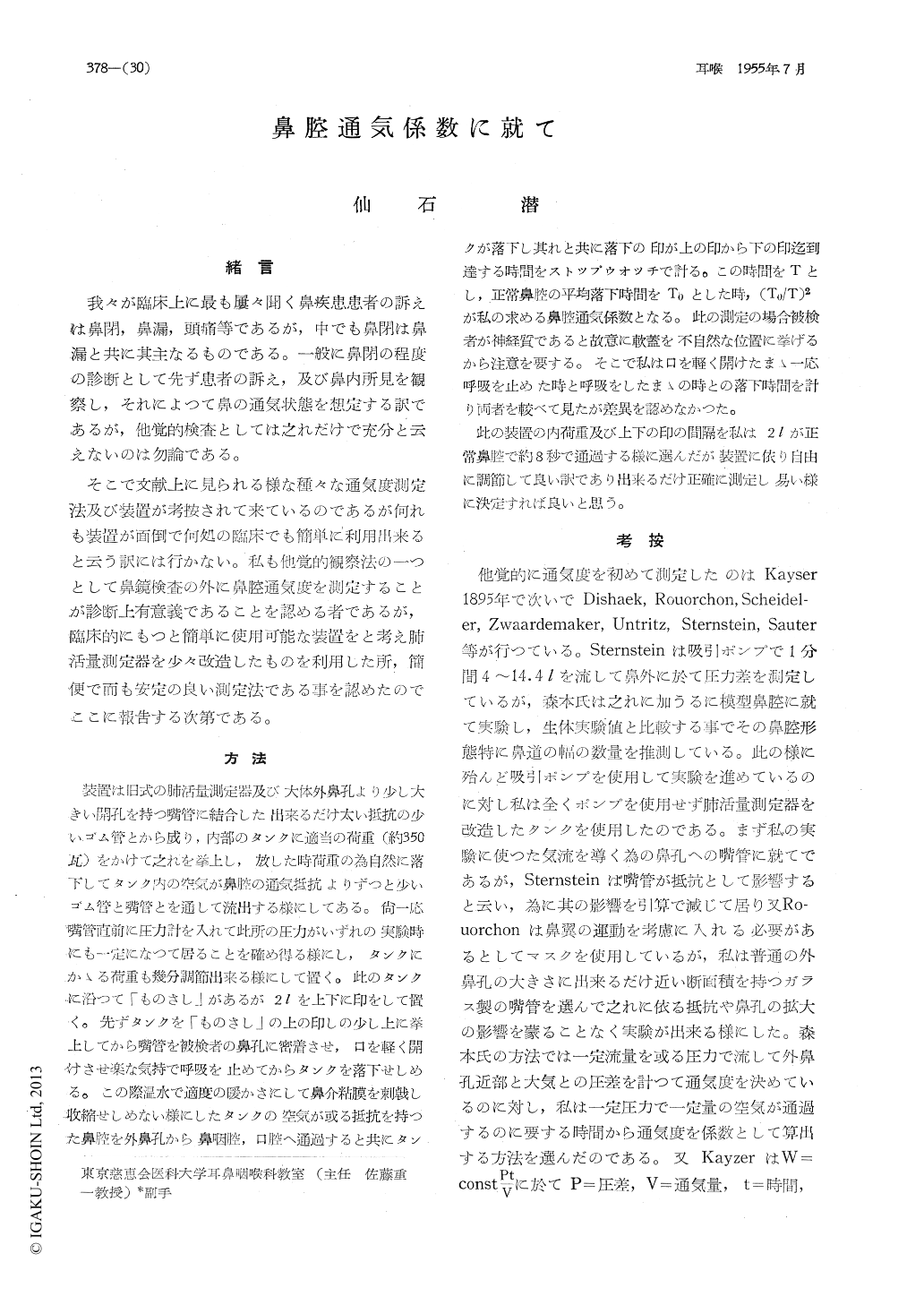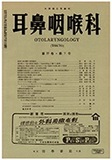- 有料閲覧
- 文献概要
- 1ページ目
緒言
我々が臨床上に最も屡々聞く鼻疾患患者の訴えは鼻閉,鼻漏,頭痛等であるが,中でも鼻閉は鼻漏と共に其主なるものである。一般に鼻閉の程度の診断として先ず患者の訴え,及び鼻内所見を観察し,それによつて鼻の通気状態を想定する訳であるが,他覚的検査としては之れだけで充分と云えないのは勿論である。
そこで文献上に見られる様な種々な通気度測定法及び装置が考按されて来ているのであるが何れも装置が面倒で何処の臨床でも簡単に利用出来ると云う訳には行かない。私も他覚的観察法の一つとして鼻鏡検査の外に鼻腔通気度を測定することが診断上有意義であることを認める者であるが,臨床的にもつと簡単に使用可能な装置をと考え肺活量測定器を少々改造したものを利用した所,簡便で而も安定の良い測定法である事を認めたのでここに報告する次第である。
SENGOKU proposes a method by which a coefficient of the amount of air that may pass through a given nose may be calculated at ease and practical, deriving thereby, a numerical ba-sis for the diagnosis of impaired breathing. The air is lead out from a simple tank conta-ining a known quaniity by means of a rubber tubing and allowed to pass through a normal nose noting the time of its passage; similarly, the nose under examination. The square of the proportion of these time difference becomes the confficient.In the normal nose the value of this is 1; should it fall below 1 the nasal con-dition is considered better than normal; above 1, the condition is worse. Objective clinical fin-dings closely coincide the results that are obt-ained by numerical figures. Subjective feeling of the patients also bear out this general trend but at times the sensation of the impairement in breathing may over-influence their though-ts.

Copyright © 1955, Igaku-Shoin Ltd. All rights reserved.


